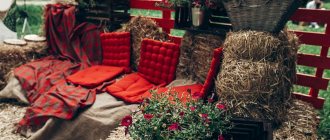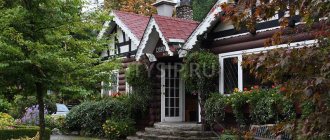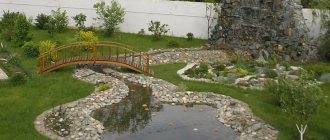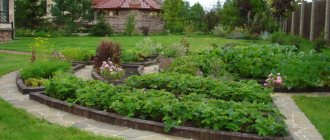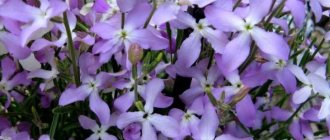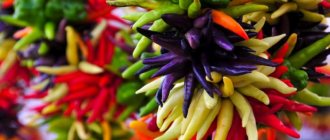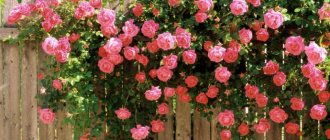Today, there are many types of plants for garden plots, which differ in height, density, appearance and other characteristics. Fast-growing conifers are also in great demand. They are mainly used for hedges, but garden compositions with their participation are often found.
Quote: The main advantage of conifers can be considered their long life span.
Among the evergreen fast-growing plants, the following varieties stand out:
- dwarf - do not gain a height of more than one and a half meters;
- medium - their height range is approximately from 5 to 17 meters;
- tall - in adulthood the tree gains more than 18 meters in height.
The maximum growth rate of any conifer variety is 0.3 meters of annual growth. Fast-growing coniferous trees for landscape design and fence construction are selected taking into account the fact that they will reach their average height in 5–6 years.
The fastest growing trees
Eucalyptus grows the fastest: in the first 3 years it can grow up to 10 m, and by the tenth year of its life it can “grow” up to 25 meters. Unfortunately, eucalyptus is not grown in most regions of Russia, since it is a tree of tropical and subtropical climates. Other tree species are suitable for Russian latitudes, which, although inferior in growth to eucalyptus, are also fast-growing.
The annual growth of birch at the peak of its development can reach 2 m, and it is considered the fastest growing tree of temperate latitudes in Russia. Birch quickly forms a crown, increases the diameter of the trunk, and in 4 years grows into a fairly large tree. The most common types of birch in Russia are silver and curly.
The second place in terms of growth intensity is occupied by white willow. You can root a small twig, and with sufficient soil moisture it will turn into a spreading tree in 5 years.
Poplar grows very quickly, especially its pyramidal forms, which form narrow, upward-pointing crowns. But one plant is of little use on a site, and in order to protect the site from the wind or create dense shade, you need to plant at least 3-4 poplars nearby.
White acacia (false acacia) is a tall tree with a spreading crown, blooming with fragrant white inflorescences from May to June. The plant belongs to the genus Robinia, and is not related to the genus Acacia, inhabitants of the southern regions, which are not characterized by rapid growth rates.
Deciduous trees also include various types of maples, elms and ash trees, as well as bird cherry and aspen. In general, all tall deciduous trees grow quite quickly until they reach an “adult” habit.
Interesting. All trees do not grow the same throughout their lives. At first, they rapidly increase in volume and height, and from about 10 years of age, the rate gradually decreases. For each plant, a decline in development occurs at a different stage of growth, but it occurs in deciduous and coniferous species almost equally.
Metasequoia glyptostrobioides
Living metasequoia fencing has been in the making for many years. Under natural conditions, it grows along streams, on mountain slopes, and in hollows. The height of an adult coniferous tree reaches 40 m. The crown of the plant is first pyramidal and then becomes spherical. The needles are needle-shaped, light green above, with a bluish bloom below. In autumn the color changes to brown-red, and by winter the needles fall off.
Metasequoia glyptostrobioides
Metasequoia grows in both shady and sunny areas, the main thing is to provide the needles with protection from drafts and cold winds. Loves drained, moist soils, but has a negative attitude towards stagnant moisture. Lack of watering will negatively affect the growth of the plant and its condition during wintering. Other decorative types of metasequoia are also used for landscape design - Chinese, furrowed cone.
Fast-growing trees for the garden
In landscaping a suburban area, you can use maples, birches and other tree species, but most often they are planted outside the fence. Typically, other crops are used within the land plot: ornamental, fruit, coniferous, medium and low-growing plants.
Deciduous decorative
Trees with an unusual crown shape and non-standard leaf color look beautiful on an open lawn. They are planted in small groups, singly, or as a background for flower beds.
Beautiful trees for the garden:
- Red maple Red Sanset – deep red leaves;
- False sycamore maple Purpurea - the underside of the leaf blade is burgundy in color, and the upper side is green;
- Ash-leaved maple “Flamingo” - newly opened leaves have a pink tint, later they become variegated;
- Norway maple Drummondii with variegated foliage;
- Tomentose linden Silver Globe - has spectacular silvery foliage;
- White poplar Nivea – the underside of the leaf blade is snow-white, when gusts of wind the crown shimmers with silver;
- Scandinavian mountain ash Magnifica - leaves are silvery-pubescent, ripen in the fall and bright red-orange clusters of berries remain on the branches for a long time.
Decorative deciduous trees are planted in the most visible places: near the gazebo, near the terrace, in the center of a flower arrangement, near an artificial pond. The place should be open or with light, openwork shade at midday. In dense shade, beautifully colored leaves lose color, and with it their elegance.
Coniferous fast-growing
Compared to deciduous trees, conifers grow much slower, but among them there are leaders. Large trees give the greatest increase in growth, and the first place is occupied by larch, Siberian and European.
Under favorable conditions, they grow 1 m per year. This is the only coniferous plant that sheds its needles for the winter: in the fall they turn yellow and fall off with the onset of frost. In winter, the bare branches of larch are not a very attractive sight, so it is not as often used in landscape design as other representatives of conifers.
The most popular varieties and types of thuja
Thuja has gained well-deserved popularity among amateur gardeners for its frost resistance, durability, unpretentiousness to soil composition and valuable decorative qualities that make thuja an indispensable attribute of many garden compositions.
Western thuja (Thuja ocidentalis)
Among the many different forms of thuja occidentalis, it is easy to choose compact plants even for a miniature garden.
Danica form with a spherical crown 0.6 m high and 1 m in diameter, the needles are scaly, thick, soft, dark green, suitable for single and group planting.
Thuja occidentalis Danica
The dwarf cushion-shaped Golden Tuffet with thin, flexible, hanging shoots at the age of 10 years does not exceed 0.6 cm, diameter is about 1 m. It is interesting for its golden-orange needles, which retain their color in winter.
Thuja occidentalis Golden Tuffet. Photo by the author
The slow-growing Teddy form with a spherical crown has a height of about 0.5 m at the age of 10 years. The blue-green needles acquire a bronze color in winter and are suitable for container planting.
Thuja occidentalis Teddy
The list of dwarf forms of thuja occidentalis is long: spherical light green Globosa and tiny dark green Globosa Nana, ovoid-round Hoveyi with light green matte needles and
Dumosa with a flattened crown, Little Gem with a flattened crown and rising shoots and spherical, dense Tiny Tim. The choice is huge; you can choose suitable shapes for each garden.
Dwarf coniferous crops are at the peak of popularity today; they are planted by both owners of six-hundred-acre plots and owners of estates who are not limited by area. It's all about their attractiveness and diversity, because just a few plants allow you to create spectacular compositions that are stable at any time of the year.
Fast-growing shrubs for the garden
Along with trees, deciduous, coniferous and berry bushes are grown in summer cottages. In small areas they can be found even more often than trees, since the compactness of the crown allows you to save space. In addition, shrubs are more versatile: they are used for zoning a site, creating hedges, and being incorporated into flower arrangements and flower beds.
Coniferous fast-growing shrubs
Cossack juniper (Juniperus Sabina) grows quite quickly. It rapidly grows in width, forming dense masses. It has the ability to take root by shoots: branches that are bent and in contact with moist soil take root and produce new shoots.
Horizontal juniper (Juniperus horizontalis) does not lag behind its relative Cossack in growth rate - its annual growth is 15 cm. Rising above the ground by only 30 cm, in the horizontal plane it can cover an area of 5 m.
Advice. To quickly fill the garden, it is recommended to buy coniferous plants at 4-5 years of age, always in containers. Planting is carried out with minimal damage to the root system, due to which adaptation is quick and painless, and the plant gives good growth already in the year of planting.
Deciduous shrubs
Deciduous ornamental shrubs can change the landscape in just 2-3 years, since many of them grow very quickly. The top 6 in terms of speed of green mass growth include the following plants:
- Viburnum foliage - if the bush is not trimmed, it grows up to 3 m in height. The branches are densely leafy, blooming with white inflorescences in the first half of summer;
- Mock orange - in some areas known as jasmine, but this is a different plant. A very viable and unpretentious shrub, valued for its abundance of flowering with fragrant, loose inflorescences and rapid growth;
- Various types of summer-flowering spirea (vangutta, oakleaf, arguta, gray). It is unpretentious, frost-resistant, and easily tolerates drought. In the month of June, thin branches bend to the ground under the weight of white inflorescences, which is why the plant is sometimes called the “white bride”;
- Common viburnum - loves moist soil and is not afraid of low temperatures. The branches are weakly branched, attractive in the fall with red clusters of berries;
- Lilac - forms many shoots that stand as a solid, impenetrable wall. It is loved by many summer residents for its large fragrant inflorescences of lilac and white color;
- Cotoneaster is a dense shrub with long, downward-sloping branches; there are creeping forms. All cotoneasters grow quickly, but the variety Parkteppich stands out especially. Last year's leaves fall off only after new ones grow, so the plant can be conditionally classified as evergreen.
Berry bushes
The use of fruit-bearing fast-growing shrubs in landscaping a plot provides two advantages: edible (or medicinal) fruits and a beautiful landscape in 3-4 years. Gooseberries or currants are unlikely to be suitable for these purposes, since they do not have a high growth rate, but there are other, faster-growing species.
Comments (4)
Igor
07/08/2017 at 01:33 |
Of all the coniferous trees and shrubs listed in the article, it is best to plant juniper and Serbian pine on the site, which grow faster than other types of coniferous trees.Answer
Yulia Expert Plodogorod
03/08/2019 at 23:30 |
Hello, Igor! Yes, these trees grow quite quickly. But, in order to get a landscape design that will fully meet the tastes and needs of the gardener, you need to take into account a few more nuances, in addition to the growth rate.
To begin with, we recommend finding out what role the coniferous plant plays. For example, some gardeners plant them in order to get shade in the garden, to mark the entrance, to complement the composition, or to fill voids in the flower garden. You can also create a path border or a hedge.
When the goal is indicated, it becomes clear what size the plant should be, vigorous or dwarf. Next, among the diversity of the selected group, you need to select those representatives who will take root well in the existing conditions.
Thus, some conifers are indifferent to the composition of the soil or watering, certain trees and bushes prefer shaded areas, and some prefer only bright sun.
We recommend checking what kind of diseases and harmful insects are found on the site and reading information about how resistant the selected plant is to them.
Now you can already understand which plants from the sample reduced according to the described conditions are suitable in appearance and will quickly grow to complement the site.
Answer
Anya
03/07/2019 at 00:28 |
They say there are also special types of fertilizers for coniferous plants so that they grow and develop better. Can I have a couple of names for my Christmas trees? I want to try feeding trees with them.
Answer
Yulia Expert Plodogorod
03/09/2019 at 00:29 |
Hello, Anya! Fertilizers are usually used for young and small coniferous plants. The most important application of fertilizers is carried out in the spring. Those feedings that are applied in the summer are of an auxiliary nature.
As for mature, vigorous trees, such as spruce or pine, there is no point in feeding them. To keep them healthy and beautiful, you need to maintain the overall good condition of the soil and the area as a whole.
Small specimens require the most care, including fertilizers, especially if they are not typical for the region in which they grow.
In order for the needles to be thick and have a rich color, magnesium is required. A significant amount of calcium is required for the formation of young branches. We also recommend adding sulfur and iron to your diet. But you need to make sure that the products used do not contain chlorine.
The use of mineral mixtures, manure, droppings, and herbal tinctures is not recommended. To provide the plant with nitrogen, potassium and phosphorus, mulch the soil underneath with peat or leaf humus.
If the needles begin to acquire a yellow or red-brown tint, we recommend using stimulant drugs. For this you can use Zircon or Novosil.
If the plant looks very bad and there is a suspicion that it has begun to die, then you can try stem injections. HB-101 is suitable. The same preparation in the form of granules can be scattered around the tree trunk without digging into the soil.
In early spring, when the snow has already melted, you can use Fertika-Vesna, Bona Forte, Hera coniferous, and potassium humate. After application, the soil needs to be loosened a little. If the tree is sick or has not survived the winter well, reapply one of the products in mid- or late May.
During the summer, we recommend feeding your pet twice a month. Among the drugs you can choose Aquarin, Kristalon, Micro Mix, Agricola, Florovit. There should be a note on the packaging that the product is suitable for coniferous plants.
These products can be used until the end of summer. We do not recommend using them in the fall, especially if cold weather begins quickly in the region. If you stimulate the plant at a time when it should be preparing for dormancy, it may not survive the winter well.
Answer
Fast growing shrubs for hedges
This phrase may sound somewhat hackneyed, but you can’t do without a fast-growing shrub when creating a hedge. From it you can quickly “grow” a very dense, impenetrable fence of any height.
Free growing hedges
If the fence of plants will not be trimmed, you can select highly decorative plants. Barberry (Amur and ordinary) is a fruit-bearing shrub with berries rich in vitamins K and C. Thunberg barberry has a particularly attractive appearance with graceful, bowing branches, completely strewn with small burgundy-red leaves.
A snowberry garden is suitable for zoning the site. Its fruits in the form of white balls remain on thin branches almost all winter. It tolerates shearing easily and is unpretentious in terms of soil composition.
Advice. To fence a plot of land from the street side, thorny plants, for example, thorns and rose hips, are suitable. True, rosehip has a “habit” of growing uncontrollably, so it should immediately be allocated an area, fencing it with a border.
Molded hedges
For a trimmed green hedge, densely leafed, abundantly branching shrubs are selected, that is, those with a dense dense crown. The advantage of a molded fence is its compactness: it occupies a strictly limited space and does not block the view. Common privet, hawthorn, cotoneaster, and bush willow grow quickly and easily tolerate pruning.
Cotoneaster brilliant
Conifers are used in free-growing and shaped hedges. Thuja occidentalis grows quickly. The most unpretentious variety is “Brabant”, the annual growth of which is up to 30 cm. You can also plant a hedge of western thuja Columna and Smaragd.
Thuja Columna
Norway spruce and prickly spruce are used to create impenetrable thorny fences, and Virginia juniper is used for zoning a site.
By planting a hedge, you can combine plants of different heights and foliage colors, creating a unique landscape. Fast-growing shrubs and conifers are excellent materials for this creative work.
In the end, I would like to say that trees, just like any living beings, need care and maintenance: pruning, proper soil, protection from diseases and pests. It is not enough to simply plant a seedling and forget about it. You can find care manuals on the Internet, as well as information about means of protection against diseases (fungicides) and pests (insecticides such as Coragen, KS Expert Garden and Confidor Extra).
dizlandshafta
How to prune conifers
Use high-quality, well-sharpened garden tools - pruning shears, garden shears, garden saw. After pruning each plant, wipe the cutting blade with a disinfectant solution to avoid spreading infection. Pine trees are pinched by hand.
Forming coniferous plants is not so difficult, but it requires skill and knowledge of the matter. Therefore, the best alternative to this operation would be to purchase compact forms that meet your design. They can be placed in a minimal area and even in a container.
How to care for planted thuja cuttings before planting them in a permanent place
The optimal temperature is +18-23 degrees. Humidity should be high - about 70-75%. Storage should be carried out in a warm place exposed to diffused light (direct rays are dangerous!). And the greenhouse itself must be regularly ventilated.
Water the plant as carefully as possible to avoid exposing the “heel” and getting moisture on the needles. A spray bottle is ideal for delicate watering.
Water only when the top layer of soil or sand dries out and remember that too much moisture can have a negative impact on the plant.
In the fall, after successful rooting, planting should be done in larger flowerpots or in open ground in a special bed (if the weather permits). If you want to plant in flowerpots, you should prepare a nutrient substrate: just mix garden soil with high-moor peat. After this, be sure to regularly water, feed, and remove weeds near the coniferous plant.
Video: rooted cuttings of thuja smaragd four months after planting in open ground.
After winter cold, the covering material can be removed. But this should be done only if you are sure that frost will not return. Continue to perform the care that you provided for the thuja cuttings earlier.
If you dream of decorating your plot with lush and luxurious shrubs, then the method of propagating thuja by cuttings is perfect for you. It can be done independently at home without any problems or difficulties. This method is not expensive and economical, and when done correctly it gives excellent results. Good luck in propagating and growing thuja!
Video: how to properly propagate thuja from cuttings at home
Shade-loving plants for the garden - how to decorate the area
At the first stage of planning a garden in a problematic area, you should understand the concepts. There are three types of shadow: critical (from buildings and blank walls), significant (it is provided by tree crowns that practically do not transmit light), diffused (they receive lighting for 3-5 hours a day).
In the first case, it is better to abandon flowering plants. Preference can be given to a small recreation area or planting the most unpretentious plant. They can be lily of the valley, lungwort, fern, tiarella, and some types of hosta.
Fern is one of the popular shade-loving plants for the garden.
If you want to decorate your dacha under trees or near light hedges, you can use shade-tolerant plants that require several hours of light per day. These are periwinkle, loosestrife, heuchera, and garden geranium. When wondering what plants love shade and grow under trees, you can find a simple solution. A surefire option for young trees and dwarf varieties will be those varieties that bloom even before the buds appear on the branches. For example, doronicum, hellebore, liverwort, primroses, crocuses, scillas, snowdrops, chionodoxes, daffodils.
Shade-tolerant plants
The widest range of shade-loving plants is available for areas that are illuminated for at least three hours a day: meadowsweet, green and variegated common herb, cyanosis, Rogersia horse-chestnut-leaved, sedum, peppermint, lupine, daylily, wild strawberry, kupena, bellflower, etc.
Features of planning flower beds with shade-loving plants
Most plants have a clear division according to their moisture-loving properties. Some, such as yellow swimmer, dicentra and garden geranium, do not grow in drought conditions. Others, like the tenacious heuchera, do not tolerate waterlogging.
Composition of coniferous and shade-loving plants
Another important point when planting in close proximity to trees is the location of the root system and descending branches. If the roots are too close to the soil surface, they can be masked by mulching (up to 10 cm). You can plant ground covers. And decorate with container flowers.
If the branches are located at a distance of half a meter from the ground, you will have to abandon medium-sized and tall plants. But some decorative small species - Volzhanka and periwinkle - are quite a suitable solution.
Rules of care
Columna does not require careful care. The variety is not picky, but loves care. The plant will look attractive if it is watered on time, fertilized, and treated against pests and diseases. After planting, the seedlings are watered every week so that their root system grows better. A bucket of water is enough for one thuja, but if it is hot and dry, then the amount of liquid should be doubled. If you want to achieve maximum efficiency, then you need to use sprinkling. This method of watering ensures maximum replenishment of moisture, which evaporates quickly through numerous needles. Sprinkling allows you to wash away dirt that settles on the foliage in the form of dust.
After watering, it is useful to loosen the soil around the plant.
The soil must be processed carefully, as the root system can easily be damaged. Immersion depth – up to 9 centimeters
Moisture will be retained longer if you apply a layer of mulch. Small wood chips are ideal for thuja, as they retain moisture well.
When "Columna" is planted with fertilizing, no nutrients are required for a year. After a year, every spring, experienced plant growers advise applying a small amount of complex fertilizer. 100 grams is enough for one square of soil surface. Thuja can look beautiful even without regular trimming, but it is recommended to treat it every year in the spring. This sanitary pruning allows you to remove dry branches and those that have been damaged by insects. If necessary, a decorative haircut is performed.
Caring for seedlings in boxes
- In the first year, the seedlings grow only 7 cm, no special care is required, the main requirements are watering, spraying, adding soil, and fertilizing.
- Next year in the spring, they begin to pick seedlings into separate pots or cups with soil for coniferous plants. After the seedlings have taken root, they can be placed outside, finding a shaded place, regularly watering and inspecting the seedlings in order to identify diseased specimens in time. In winter, the cups are carried away into shelter.
- In the third year, the seedlings again need to be transplanted into larger pots; from May they can be safely taken outside, and in the fall they can be planted in a prepared permanent place, leaving the root collar at soil level.
Light shadow
Such a shadow is created under the canopy of trees with a sparse, openwork crown, such as rowan, cherry, plum, and sea buckthorn. All of them have a superficial root system, so frequent digging of their trunk circles is undesirable. Here you can create gardens with medicinal plants that will not only please the eye, but will also bring benefits. Dense, beautifully shaped lemon balm bushes emphasize the beauty of lilies, and peppermint thickets can serve as a background for black cohosh and lupine bushes.
Daylilies do well in light shade
The needs of tree species for light, well-drained, fertile soils correspond to the needs of most bulbous plants (daffodils, tulips, snowdrops, lilies) and crops such as daylilies and lungworts. The ground cover of lily of the valley, fragrant woodruff, and spring navelworm looks great here. However, it is not advisable to plant primroses, phlox and astilbe in these conditions, since they need more clayey, moisture-intensive soils and do not tolerate drying out well.
Lilies of the valley create thickets under the trees


